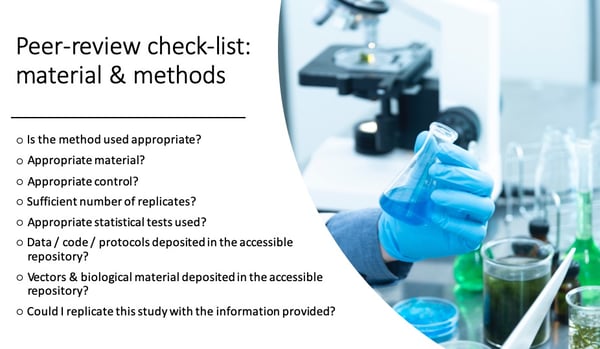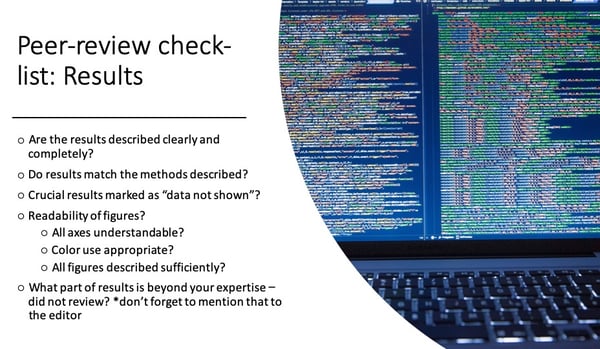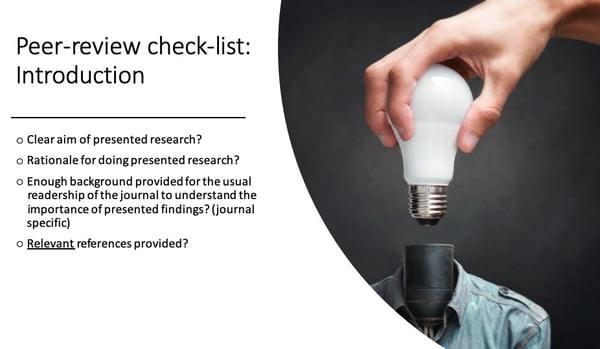This post was contributed by Magdalena Julkowska, a postdoctoral researcher at KAUST, Saudi Arabia.
From the perspective of an author submitting a paper, the peer-review seems like another dragon to slay on the way to publish your work in a scientific journal. The peer-review is a service that we, as scientists, provide for journal editors to help decide whether work is suitable for publication in their journal. The early peer-review attempts took place at the beginning of the 18th century. Yet the peer-review was not widely adopted by the scientific community until the mid-20th century, and many iconic papers, including the ones on the structure of the DNA, were not peer-reviewed (Baldwin, 2015).
At its very core, peer-review is a touchstone of the scientific method, ensuring that published work meets the accepted standards of reporting in the discipline and reduces the dissemination of unwarranted claims or unacceptable interpretations. A good peer-reviewer will help spot inconsistencies in the work, missing information that would prevent the study to be replicated or omission from the literature. I think that delivering constructive critique can help your colleagues at the receiving end, if not for this specific submission, then for the submission to the subsequent journal.
As a postdoctoral researcher studying plant development and abiotic stress tolerance, I have been peer-reviewing journal submissions since 2015 for a wide variety of journals. Since then, I developed a routine that works well for me to evaluate the submitted paper in addition to the journal-specific guidelines.
Peer-review step 1: The first read
At the first read of the paper, I usually try to grasp the main message of the work. I underscore the sentences that I found hard to understand or individual words that are not appropriate for the given context. After this first read, I am usually able to construct the beginning of my review - "The manuscript by ZZZ et al., describes ... The authors share a wealth of data on ... The language is ... The general representation of data is... The figures are ... In general, I think that this is an (e.g. great contribution to the community because of..." This first couple of sentences - even if written in a clumsy language make it much easier for me to go back and finish the review.
Peer-review step 2: Detailed assessment
After this initial assessment, the second read of the paper is much more detailed. I prefer to do it on another day - preferably the following morning - as usually deadlines are pressing. During this second read, I pay more attention to details and use a checklist for individual sections of the paper (see figures). After finishing my section-specific comments, I re-read what I wrote about the paper after my initial read, adjust my language in the first (and clunky) version of my general comments and adjust them if my opinion changed after this more detailed look.



Encourage open science in your peer-review
Additionally, you can ask that data and resources described in the manuscript are accessible to the community, increasing the impact of the work, and as a collateral benefit, increasing the impact of the specific journal you are reviewing for. The code and the data can be deposited in the public on-line repository (like GitHub, Zenodo, Figshare, Triad) while the wet-lab resources, like constructs or biological material, can be deposited in the specific repositories (Addgene, WormBase, Arabidopsis.info). These repositories will ensure that the results of your colleague’s hard work will be maintained and made available to the scientific community.
Be the peer-reviewer you wish for
The last thing that I wanted to mention about the peer-review, is that as a peer-reviewer, you must never forget that there is another human who is reading your comments. Receiving a peer-review is already a humbling experience, having your years of hard work being criticized and all the shortcomings and mistakes pointed out. Therefore, I try to stay away from the loaded and judgemental language. In each peer-review, I try to mention what I liked about this paper and recognize the hard work that the authors put in the manuscript. As a non-native English speaker, I sometimes miss the sensitivity to judge how aggressive my sentences might sound. What helps me in keeping the “right tone” is to address the comments to “you” rather than “the authors.” By addressing the comments to “you” I can easily check if I would have formulated specific comment differently if I would be speaking to a colleague in the office next door. So be kind, helpful, and thorough in reviewing the paper of your colleagues. The young scientists that are reading your peer-review comments will learn from them and propagate this culture further.
Many thanks to our guest blogger Magdalena Julkowska from KAUST, Saudi Arabia.
 Magdalena Julkowska did her Ph.D. on salt-stress induced responses in Root System Architecture of Arabidopsis HapMap population in Amsterdam. Currently, she is a postdoc at KAUST, Saudi Arabia, in the group of Prof. Mark Tester, where she focuses on (1) salt-induced changes in root-to-shoot ratio in Arabidopsis, (2) expression patterns in plants with enhanced sodium accumulation in their roots and (3) development of tools for data analysis/visualization using R/Shiny. She is passionate about open science, BIG data analysis and sharing whatever she knows with whoever cares to listen. In March 2020 she will start her own research group at Boyce Tompson Institute.
Magdalena Julkowska did her Ph.D. on salt-stress induced responses in Root System Architecture of Arabidopsis HapMap population in Amsterdam. Currently, she is a postdoc at KAUST, Saudi Arabia, in the group of Prof. Mark Tester, where she focuses on (1) salt-induced changes in root-to-shoot ratio in Arabidopsis, (2) expression patterns in plants with enhanced sodium accumulation in their roots and (3) development of tools for data analysis/visualization using R/Shiny. She is passionate about open science, BIG data analysis and sharing whatever she knows with whoever cares to listen. In March 2020 she will start her own research group at Boyce Tompson Institute.
References
Baldwin, Melinda. "Credibility, peer review, and Nature, 1945–1990." Notes and Records: The Royal Society Journal of the History of Science 69.3 (2015): 337-352. PubMed PMID: 26495581. PubMed Central PMCID: PMC4528400.
Additional resources on the Addgene blog
- Find blog posts on scientific sharing
- Get tips on writing a review article
Resources on Addgene.org
Topics: Scientific Sharing, Open Science, Scientific Publishing







Leave a Comment